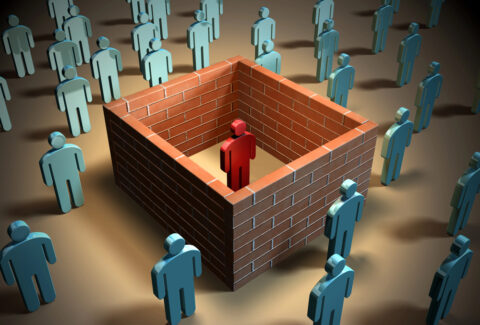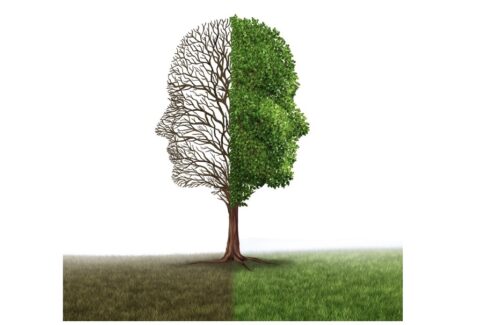Behaviors, Habits, and the Decision Matrix
Behaviors, Habits, and the Decision Matrix
We started our first behavioral certificate course module with the famous quote from the father of American Literature, Mark Twain, “A habit cannot be tossed out the window; it must be coaxed down the stairs one step at a time.â€Â When we toss something, we typically do so with indifference and without giving much thought to it. Unfortunately, a habit is called a habit because it has been a behavior that has been practiced regularly enough, frequently enough, and intensely enough. Such a behavior has become so ingrained, that our brain has automatized it[1]. The behavior soon becomes reflexive and develops into a habit. As a result, a habit cannot be simply, “tossed out the window,†as well advised the legendary Mark Twain, and as proven by the Behavior literature.
A habit then is to be coaxed. To coax means to obtain something gently and persuasively. It also means to arrange something carefully into a particular shape or position. Despite the fact that we have had the same habits for so long, we still often think that the best way to deal with them is by “tossing them out the window.†We fail to recognize that it will take some “coaxing down the stairs,†and doing so, one step at a time. There are many reasons why we fail to make such a distinction and act accordingly. Let us briefly go over these reasons in a way that you can readily apply them. We will then end by looking at the value of a Decision Matrix.
Coaxing down the stairs our unhelpful habits one step at a time entails:
-
Having a Behavior Log along with a Behavioral Appraisal
-
Having pros and cons for both our helpful and unhelpful habits
-
Designing a Decision Matrix
#1 and #2 have been discussed at length both in previous articles and in the first workshop for this course. However, we have left out the Decision Matrix, and are introducing it in this article and will continue to elaborate on it in subsequent ones.
What is a Decision Matrix [2]?
Let us break down each of the two concepts. Decision: To settle, to agree, to determine. While “Matrix,†means “that which something else originates, or develops from.†Decision Matrix, therefore, means that which our decision originates or develops from. This simple definition has a series of significant ramifications, which speak to why becoming familiar with a Decision Matrix and learning how to make the best use of it is crucial in the science of behavioral change. This also tells us something that is essential to remember. No behaviors or habits happen in a vacuum. All behaviors and habits are associated with other ones [3]. This means we may not be able to change some habits without first changing some other specific ones. This also means that the moment we have addressed some specific habits; we find ourselves unleashed and so many other more helpful habits become much easier for us to implement.
This may give you a taste of the role and importance of the Decision Matrix. In subsequent articles, we will learn how to best use it.
Are you enrolled in our Behavior Modification Certificate Course? If not, it is not too late. Click here to join.
 See you soon,
Karen and Mardoche
[1] Trafton, Anne. “How the Brain Controls Our Habits.†MIT News | Massachusetts Institute of Technology.
[3]“Habit Stacking: How to Build New Habits by Taking Advantage of Old Ones.†James Clear, 4 Feb. 2020.
About the Authors:
Karen Dubin-McKnight, PhD, LCSW, is a Columbia-trained Social Worker with wide clinical, teaching, and supervision experience. She also has a background in management, mentorship, and leadership that spans almost 20 years. Her added passion is in advocacy, coaching, public relations, and mediation. Her goal is to ensure that social workers and women feel empowered and have a voice “at the table.†She has previously held Executive level positions, and two other directorships in different organizations. She is currently Adjunct Faculty at Columbia University School of Social Work and Adelphi University School of Social Work. She also maintains a private practice, working with individuals who have experienced loss and trauma, and also provides clinical and management supervision.
Mardoche Sidor, MD is a quadruple board-certified psychiatrist, with board certifications in Psychiatry and Neurology (General Adult Psychiatry), Child and Adolescent, Addiction, and Forensic, Psychiatry. He has training in public and community psychiatry, and advanced training in psychopharmacology, Cognitive Behavioral Therapy, Family Therapy, Motivational Interviewing, and Strategic Intervention. He also has additional training in Dialectical Behavioral Therapy, Psychodynamic psychotherapy, Play therapy, and Couples therapy. He has clinical, teaching, and supervision, experience; he has mentorship, coaching, and management, skills and experience; and he has experience as a primary care physician, in public speaking and writing. His overall purpose is to help heal the world, through an increase in awareness, a shift in belief systems, and an education that empowers. He speaks and writes fluently in four (4) languages—French, English, Spanish, and Creole, with intermediate proficiency in Portuguese and Italian. Dr. Sidor is the author of 3 books and is currently working on several others.








